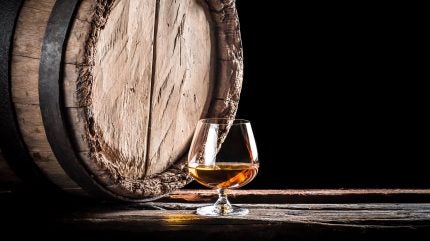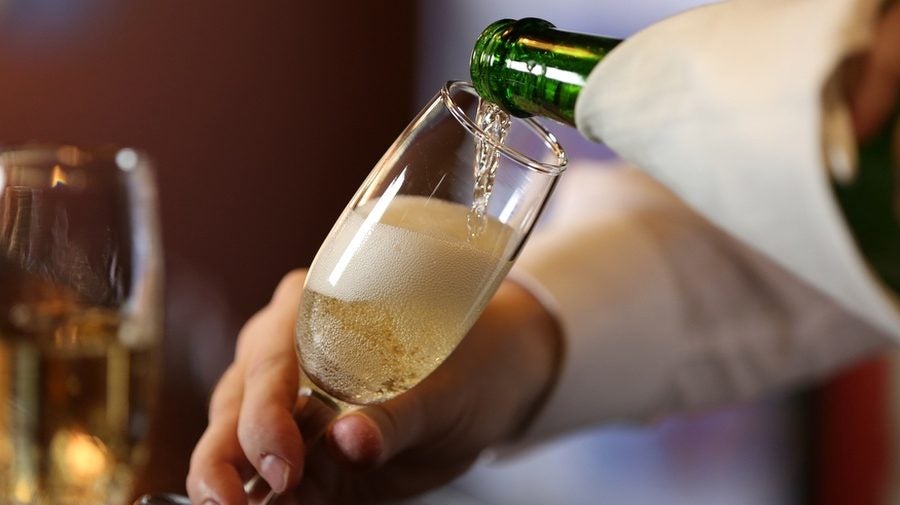
Those searching for signs of progress from the quarterly results published this week by Rémy Cointreau and LVMH would have had to look pretty hard.
Both French giants booked lower quarterly sales this week, marking the latest three-month periods in which the businesses reported declines.
LVMH’s wine and spirits division continued to see sales (and operating profit) fall in its second quarter, amid lower Champagne sales and problems for its Cognac business in China – although the company sought to assuage investors that its sales trends in the US market for Cognac were more positive.
Over at Rémy Cointreau, the Louis XIII Cognac and Bruichladdich whisky maker reported another quarter of decreasing sales, down more than 15% in its fiscal first quarter.
The 15.6% decline (on the back of a comparable figure in last year’s first quarter of a decline of more than 37%) came amid another fall in sales of Cognac – the category accounts for the majority of Rémy Cointreau’s revenues – but also a 20% drop in sales from the group’s separate liqueurs and spirits division.
Cognac remains in focus
Cognac is the category that unites LVMH and Rémy Cointreau and both companies have continued to face challenges in recent months.

US Tariffs are shifting - will you react or anticipate?
Don’t let policy changes catch you off guard. Stay proactive with real-time data and expert analysis.
By GlobalDataAt LVMH, the Hennessy maker’s CFO, Jean-Jacques Guiony, said this week the company is facing “a demand situation with Cognac in China that is quite negative and difficult to manage”.
Speaking to analysts after the group reported its second-quarter results, Guiony said: “As far as China is concerned… We have lowered the inventories very much in Q2, so our sell-out numbers are better – or not as bad – as our sell-in numbers.”
However, he added: “But, when I say not as bad, it’s that really the sellout numbers are not very, very good. We are lowering inventories, which is the right thing to do. How low is low remains difficult to assess in the current environment.”
Nevertheless, there are indications that LVMH believes it should still invest in its Cognac business in China to try to bolster sales.
“I will not mention names [but] the brands that have less invested into marketing in China over the last few quarters are penalised more than the other ones,” Guiony said. “What I mean by that is that the response from customers to marketing stimulus is still quite important in China. It’s not only a demand play. It’s also an offer play, as we always say about luxury. This is why we are keeping investing into this market, which is obviously a very important market for us.”
Rémy Cointreau’s total Cognac sales were down by more than 12% organically in the quarter to the end of June. Cognac sales in China were “flat”, affected by “high comps and weaker consumption”, the company said.
However, the group revealed value depletions “were down mid-teens” amid low consumer confidence and “cash pressures” weighing on wholesalers.
The world’s two largest Cognac markets are China and the US. Both countries have seen Cognac sales come under pressure in recent quarters for different reasons.
Guiony indicated LVMH believed sales trends were improving in the US. “We think we have reached a point where sell-in and sell-out are comparable,” he said. “I announced that a little bit too early at the end of last year. Q1 was not so much balanced in this respect but Q2 is much better, so we’ve seen virtually flat depletions and flat sell-out.
“Sell-out was a bit higher because there were areas in the US where we were really lacking stocks but, all in all, it’s under careful monitoring, as you can imagine, given the issues we have had in the past. But we believe that the inventory situation has improved markedly in the US.”
Outside Cognac
Rémy Cointreau’s liqueurs and spirits division saw its sales decline 20.4% on an organic basis, with volumes down almost 24%. The pressures in the US spirits market as a whole are well-known and it appears Rémy Cointreau was not immune to those problems, with the company reporting “some destocking alongside greater caution from wholesalers in a slowing market”.
The group pointed to some positive performances in the US. It said the value depletions for its Cointreau brand were up “low-single digit” year on year. Gin brand The Botanist “showed positive trends”.
Rémy Cointreau saw a “sharp fall” in sales from the division in EMEA, with the company pointing to inflation and “a more active promotional environment”. The phasing effect of sales also weighed on sales in the UK.
The company’s liqueurs and spirits division also saw sales decline in Asia Pacific amid a “slowdown” in consumption in South East Asia and destocking in whisky.
Trevor Stirling, an analyst at Stifel, Rémy Cointreau said the company’s “bad” first-quarter sales performance was “driven by the less profitable liqueurs and spirits division”.
Stirling suggested it remained difficult to predict when the group’s overall sales would recover but said he picked up on some signs of optimism.
“This was another weak quarter for Rémy Cointreau, but for the first time in a while we have heard positive hints regarding the category’s performance. The continuous destocking implies that absolute levels are very low, and will pick up sharply when the category’s underlying trends improve. We believe Cognac is a high-single-digit topline growth category and that Rémy Martin should grow in line,” he wrote.
“The CFO guided down H1 growth (analyst consensus forecast of +10% deemed
too optimistic) and tried his best to contain any optimism. We agree that predicting the trough is almost impossible, yet we see signs that we are getting closer.”
Champagne major LVMH is operating in a category where sales are in the doldrums. Last week, the Comité Champagne, which includes representatives of houses and growers, reported that Champagne shipments fell 15.2% year-on-year in the first half of 2024.
The figure reached 106.7 million bottles, which is now at “a level that is close to that of 2019”, the committee said.

Nevertheless, Champagne winegrowers and houses have called for a cut in the yield of grapes harvested in the region this year following the decline in shipments.
LVMH said its falling Champagne sales “reflected the ongoing normalisation of post-Covid demand but remained significantly higher than in 2019” and added: “Moreover, the beginning of the year was compared to a good first half of 2023.”
That said, speaking to analysts, Guiony expressed concern about its Champagne segment. “I think we have a severe demand issue in Champagne”, he said.
“Champagne is quite linked with celebration, happiness…maybe the current global situation, be it geopolitical or macroeconomic, does not lead people to cheer up and to open bottles of Champagne, I don’t really know. The fact of the matter is that our volumes are down double digit.
“We understand that we are not the only one. Far from that, I mean the whole industry is under severe pressure, particularly in Europe where the bulk of the volumes takes place.”
Looking ahead to Champagne volumes in the second half of the year, Guiony added: “We have orders from our retailers, they don’t seem to cheer up [much either] for the second half of the year, so I wouldn’t bet on a big improvement in trends. Although we expect it to be less bad than the first half of the year but probably still negative.”
Those comments underline the challenge faced by all in Champagne at the moment.



